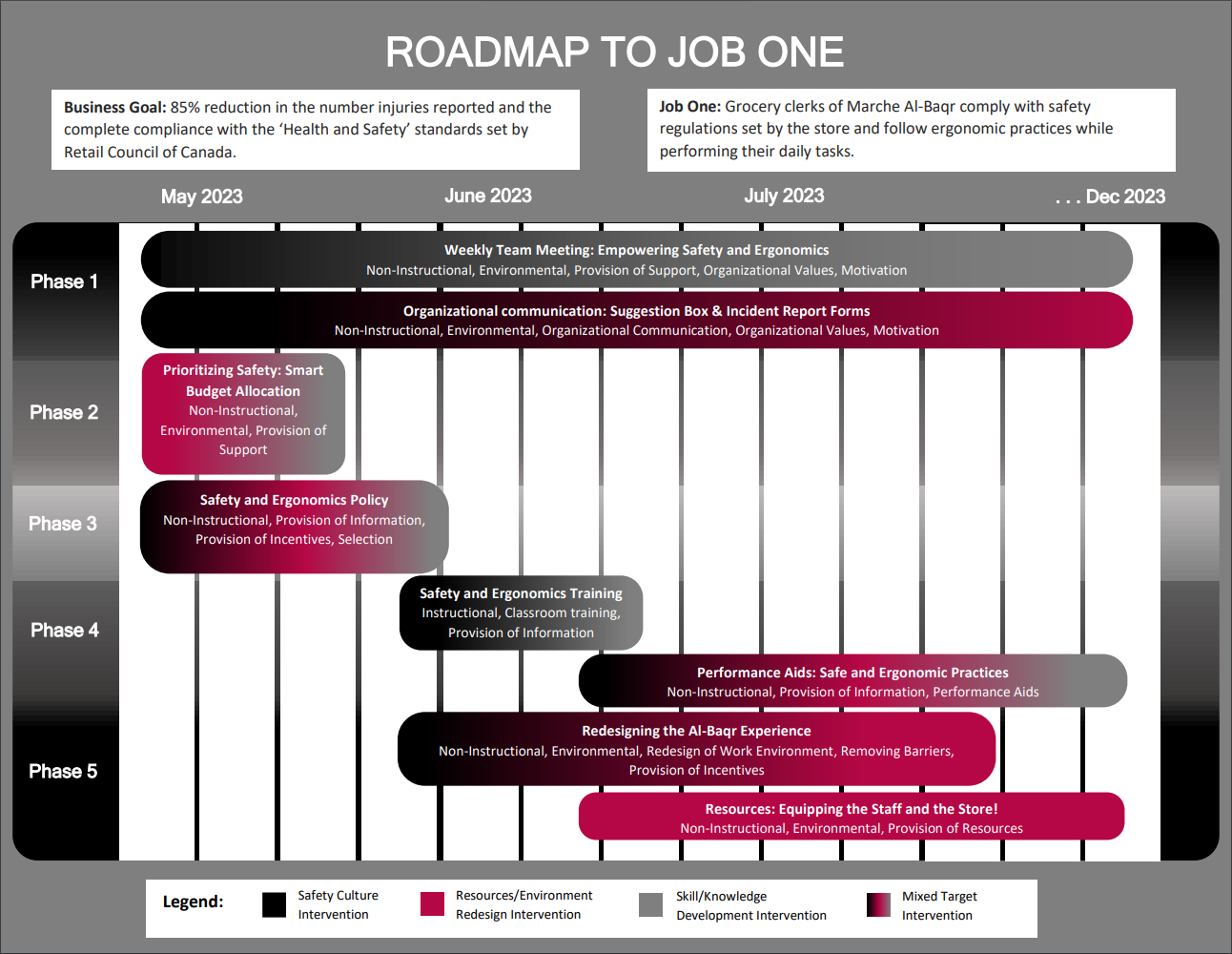
Safety and Ergonomics
at Marche Al-Baqr
A performance campaign to address safety compliance at Marche Al-Baqr (a grocery store).
Overview
As a follow-up on the Instructional Design course, I expanded on the safety compliance issue at Marche Al-Baqr (a grocery store) in my Human Performance Technology (ETEC 651) course. The course establishes the idea that performance issues in organizations need to be addressed in the context of the performers, the associated stakeholders, and the organizational values. It takes a structured approach to research, collect data, understand learners, establish performance objectives, identifying a cause, and proposing and developing, in-detail, interventions. Therefore, this project explores the performance problem through engineering models that address the problem at different levels, and expand, in-detail, on a few of the suggested solutions.
Design and Considerations
Following are a few design considerations that I took during the process:
The program follows the organization’s style guide (where applicable).
It leverages different media (e.g., text, images, videos) towards a meaningful learning experience.
Each intervention is designed for the right medium and format based on the learner profile, resources, and content.
To apply suitable best practices and theories of learning.
To provide learners with opportunities to reinforce and assess learning.
To get feedback from learners and create a bond with consumers to stay connected.
The needs assessment accounts for the diverse performers, the associated stakeholders, and the work environment.
It provides performers with the necessary incentives, motives, and resources to performers.
It provides them with the necessary support to successfully execute the performance objectives identified.


